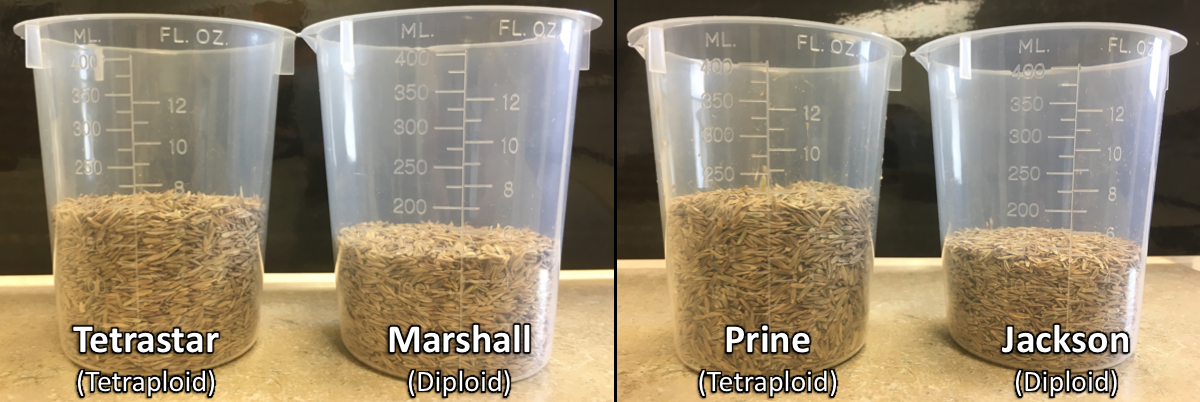Dennis Hancock, UGA Extension Forage Specialist
Book Your Seed Soon
I don’t mean to be an alarmist, but… you may want to buy your winter grazing seed soon. Annual ryegrass seed supplies are tight, and the prices look to be as high or higher than last year. Small grain seed supplies are rumored to be lower, and the seed quality challenged because of poor weather during the harvest season.
Calibrate Your Drill for Different Ryegrass Varieties
Seed sizes can vary considerably from one seed lot to another. But, the difference between diploid and tetraploid ryegrass varieties is HUGE!
There are several varieties of annual ryegrass on the market that are tetraploids, meaning their plant cells contain 4 sets of chromosomes (4n) rather than the 2 sets of chromosomes found in the more common diploid (2n) varieties. Consequently, tetraploid varieties have seed that may be up to 150 to 200% the size of diploid varieties (see figure below). Even though the seeding rate is the same (i.e., same lbs/acre), one will likely need to adjust the seed metering unit opening depending upon whether they are planting a diploid or tetraploid variety to ensure the appropriate seeding rate is being used. So BE SURE to calibrate, check, and adjust the drill frequently to account for differences in seed size between diploid and tetraploid varieties.
Each of these beakers contains 20,000 seed of their respective varieties. Note that the seed of tetraploid varieties takes up approximately 140-150% of the same volume as the diploid varieties. Photo credit: Henry Jordan, UGA Statewide Variety Testing Program.
- November 2025 Weather Summary & Winter Outlook - December 5, 2025
- Friday Feature: The History of Beekeeping - December 5, 2025
- Friday Feature:Malone Pecan Festival Tractorcade - November 21, 2025
